0.2(3⋅5−3)3⋅2⋅5+1⋅3(3⋅6+1⋅4))
Step by step video & image solution for 0.2(3*5-3)^(3)*2*5+1*3(3*6+1*4)) by Maths experts to help you in doubts & scoring excellent marks in Class 6 exams.
Updated on:21/07/2023Similar Questions
[(513+323)⋅(623⋅434)÷32]26
View SolutionFor teaching the concept of probability, Mrs. Verma decided to use two dice. Shet took a pair of die and write all the possible outcomes on the blackboard. All possible outcomes wave:
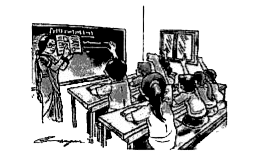
(1,1), (1,2), (1,3), (1,4), (1,5), (1,6)
(2,1), (2,2), (2,3), (2,4), (2,5), (2,6)
(3,1), (3,2), (3,3), (3,4), (3,5), (3,6)
(4,1), (4,2), (4,3), (4,4), (4,5), (4,6)
(5,1), (5,2), (5,3), (5,4), (5,5), (5,6)
(6,1), (6,2), (6,3), (6,4), (6,5), (6,6)
The probability that 5 will come up at least once is:
View Solution
Knowledge Check
The sum of the series 11.2+1.31⋅2⋅3⋅4+1⋅3⋅51⋅2⋅3⋅4⋅5⋅6+...is
Ae−1Be1/2−1Ce1/2+eDNone of these556+[223−[334(345÷912)]]
A7B223C447D436
For teaching the concept of probability, Mrs. Verma decided to use two dice. Shet took a pair of die and write all the possible outcomes on the blackboard. All possible outcomes wave:
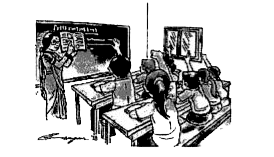
(1,1), (1,2), (1,3), (1,4), (1,5), (1,6)
(2,1), (2,2), (2,3), (2,4), (2,5), (2,6)
(3,1), (3,2), (3,3), (3,4), (3,5), (3,6)
(4,1), (4,2), (4,3), (4,4), (4,5), (4,6)
(5,1), (5,2), (5,3), (5,4), (5,5), (5,6)
(6,1), (6,2), (6,3), (6,4), (6,5), (6,6)
The probability that 6 will come up on both dice is
View SolutionFor teaching the concept of probability, Mrs. Verma decided to use two dice. Shet took a pair of die and write all the possible outcomes on the blackboard. All possible outcomes wave:
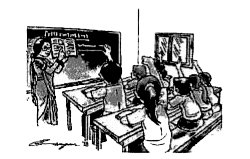
(1,1), (1,2), (1,3), (1,4), (1,5), (1,6)
(2,1), (2,2), (2,3), (2,4), (2,5), (2,6)
(3,1), (3,2), (3,3), (3,4), (3,5), (3,6)
(4,1), (4,2), (4,3), (4,4), (4,5), (4,6)
(5,1), (5,2), (5,3), (5,4), (5,5), (5,6)
(6,1), (6,2), (6,3), (6,4), (6,5), (6,6)
The probability that 4 will not come up on either of them is
View SolutionFor teaching the concept of probability, Mrs. Verma decided to use two dice. Shet took a pair of die and write all the possible outcomes on the blackboard. All possible outcomes wave:
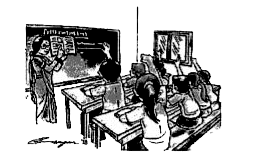
(1,1), (1,2), (1,3), (1,4), (1,5), (1,6)
(2,1), (2,2), (2,3), (2,4), (2,5), (2,6)
(3,1), (3,2), (3,3), (3,4), (3,5), (3,6)
(4,1), (4,2), (4,3), (4,4), (4,5), (4,6)
(5,1), (5,2), (5,3), (5,4), (5,5), (5,6)
(6,1), (6,2), (6,3), (6,4), (6,5), (6,6)
The probability that both numbers comes up are even, is
View SolutionFor teaching the concept of probability, Mrs. Verma decided to use two dice. Shet took a pair of die and write all the possible outcomes on the blackboard. All possible outcomes wave:
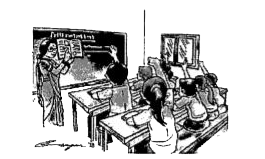
(1,1), (1,2), (1,3), (1,4), (1,5), (1,6)
(2,1), (2,2), (2,3), (2,4), (2,5), (2,6)
(3,1), (3,2), (3,3), (3,4), (3,5), (3,6)
(4,1), (4,2), (4,3), (4,4), (4,5), (4,6)
(5,1), (5,2), (5,3), (5,4), (5,5), (5,6)
(6,1), (6,2), (6,3), (6,4), (6,5), (6,6)
The probabiliyt that both numbers comes up are prime numbers, is
View SolutionIf A=⎡⎢ ⎢ ⎢ ⎢⎣2315313234373223⎤⎥ ⎥ ⎥ ⎥⎦and B=⎡⎢ ⎢ ⎢ ⎢⎣23351152545736525⎤⎥ ⎥ ⎥ ⎥⎦, then compute 3A−5B.
View SolutionIf A={1,2,3},B={3,4}andC={4,5,6},then prove that(A×B)∪(A×C) ={(1,3),(1,4),(1,5),(1,6),(2,3),(2,4),(2,5),(2,6),(3,3),(3,4),(3,5),(3,6)}
View Solution
